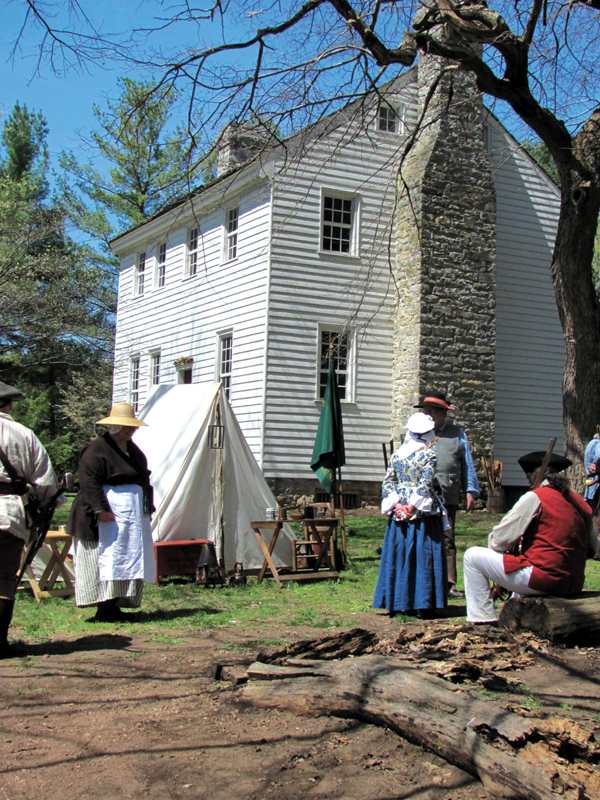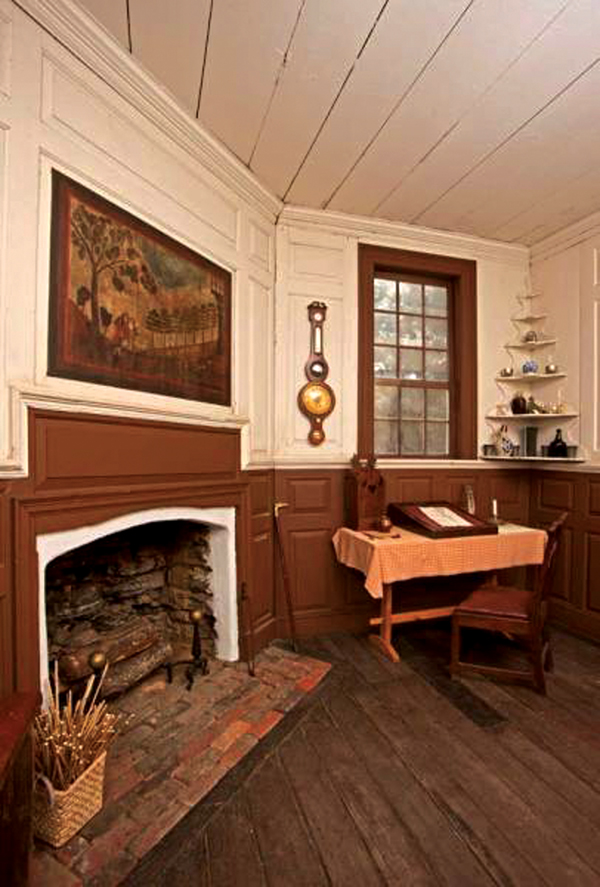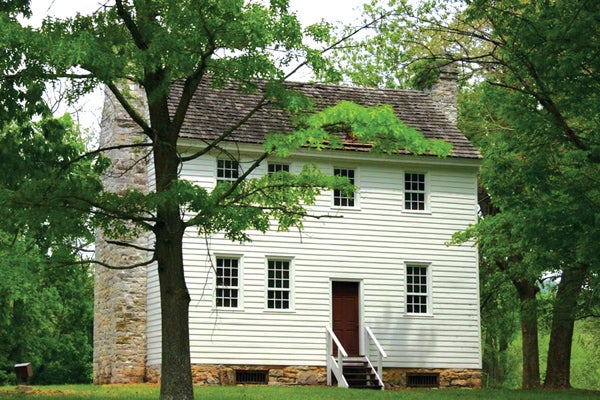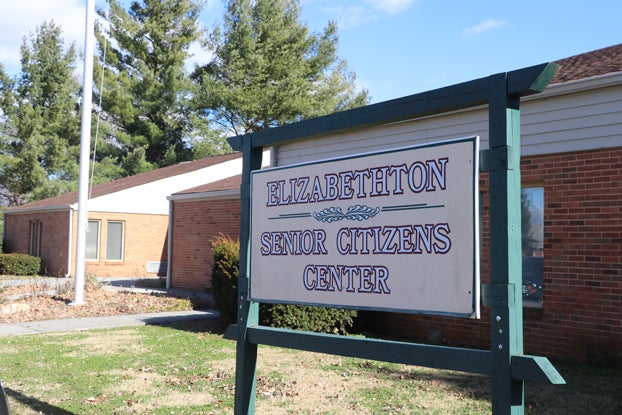‘The Mansion,” a prize piece of history
Published 10:40 am Friday, June 25, 2021
|
Getting your Trinity Audio player ready...
|
If you have attended this year’s production of “Liberty! The Saga of Sycamore Shoals” you heard a lot about the Carters and how the Wataugans played a role in the winning of the Revolutionary War.
The drama may be the big event of the summer for the Sycamore Shoals State Park, but there are other events just as interesting and informative, among them tours of the Carter Mansion, located at 1031 Broad St.
There were two tours of the historic home this month, and coming up July 2 and 4 will be more tours of Tennessee’s oldest frame house, which was built by Col. John Carter between 1775 and 1780. The July 2 tour is scheduled from 1:30 to 2:30 p.m. and the cost is $5 for ages seven to 17 and $9 for adults.
Historians have long raved over the Mansion, the handsome colonial home John Carter built on the bank of the Watauga River, just outside Elizabethton. The Mansion retains much of its original beauty – hand carved moldings and over-the-mantle paintings.
Although the Mansion is over 200 years old, it had only been owned by two families before the state purchased it – the John Carter and William S. Thomas descendants. According to deeds at the Carter County Courthouse, Mary Carter, a great-niece, sold the property to William Thomas in 1878 and his daughter, Mrs. Addie Lewis and Mrs. Minnie Thomas, a daughter-in-law, lived in the home for a time.
The original tract of land owned by John Carter comprised about 5,500 acres and approximately 400 acres were retained by the Thomas family.
When it was built, the Mansion was purposely situated on a slight rise to protect it from flood stages of the Indians’ “Beautiful River,” the Watauga.
Since this was practically the only house in this section and there were no roads, persons who came to visit came by boat and Carter’s Landing became a famous stopping place. Many were the daintily shod feet of aristocratic callers who stepped from their boats and ascended the slight rise to the house.
Many stories have been woven about Indian attacks on the Mansion and the keeping of slaves who helped to build and maintain the home, which must have been one of the finest houses in this part of the country when completed. Little trace of the previous Indian village remains on the land today since curio hunters have long carried away many of the treasured relics.
Slavery was never on a large scale in John Carter’s time, but the scope of the property demanded attention for the once production of barley, wheat, and corn. Where these crops once grew, beautiful homes line the highway today.
When the house was built, beautiful hand-carved paneling was used in all of the rooms.
Frontier settlers lived in log cabins with dirt floors, but the Carter house has an oak shake roof and a limestone foundation. Limestone chimneys bracketed the exterior. “The floor plan is typical of the day’s Tidewater estate houses,” historic interpreter Chad Bogart explains to visitors. The front door enters an open great room, which includes the staircase. A smaller parlor is through a door, and behind that is Carter’s office.
The interior boasts handsome fireplaces, carved paneling, chair rails, applied pilasters and lintels, and a wealth of bolection moldings. Bolection molding is used to conceal and decorate a joint caused by two surfaces coming together at different levels; it projects beyond the surfaces of both, often with a raised center. Bolection molding sometimes incorporates a rabbet the depth of the difference in levels. Practical and decorative, bolection molding finishes door openings, adds grace to fireplace surrounds, and brings cohesion to paneled walls. (The name is of obscure origin.)
Incredibly, 90 percent of the interior is original. Two overmantel paintings, one in the office, the other in the upstairs master bedroom, were painted directly onto the wall panel by an amateur artist and are considered the oldest in the state. The bedroom scene, exposed to the elements for two centuries, is dark but viewable. The downstairs painting is crisp, having been protected from smoke and light by over-painting for many years.
Bill Thomas, former owner of the Mansion, used to tell an interesting story of holes that were bored into the paneling. It seems that the original copy of the Watauga Association of which John Carter was chairman has never been found. Thomas often said that the story was that Carter might have secreted the document in the paneling of his bedroom since his desk was there. However, on its restoration, no document was found.
Other holes were cut into the paneling as look-outs for Indians, but for years the plugs remained in them.
Although, there was a smokehouse on the property, in John Carter’s day meat was hung in an upstairs room.
There is not only much history surrounding the Carter Family, but around the Carter Mansion, which was home to Carter County’s “First Family.”
Historical accounts say, John Carter, a merchant, came to the Watauga Settlement in 1770 from the North Fork of the Holston River after having trouble with the Cherokee Indians. His former hoe still bears his name: Carter’s Valley. He is considered by historians to have been educated and well-respected.
Carter was awarded a “standard land grant” of 640 acres in the Watauga Old Fields by the government of North Carolina. He did not need to clear the land; Indians had long since cut the trees and had cultivated the land for so long it was no longer fertile.
When compared to other people of the time, the Carters were definitely upper-class people. At the time of Landon Carter’s death in 1800, at age 40, Landon owned 2,000 acres, practically all of Lynn Valley. John and Landon Carter were credited with starting the first iron furnaces, sawmills, and gristmills in the area.
The Mansion stayed in the family until 1877 when it was sold to the Thomas family, who in 1973 sold the property to the state. The house was lived in until the mid-60s.
When the house was restored by the state, the two great chimneys were rebuilt and the weatherboard was stripped off and replaced. However, the building is said to still contain 90 percent of its original materials
There is some history to be told about every nook and corner in the home. However, to experience it, you must see it for yourself.






